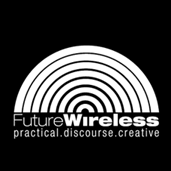
.programme
.background
.contributors
.visions
.links / resources
 |
.programme |
| .visions / sophia drakopoulou | |
| Sophia Drakopoulou (bio)
|
'wireless future' A new kind of social space is created out of the transmission and reception of data between mobile phone users. A private communicational space arising from the city's striated space, a social space born out of a new telecommunications technology. This virtual but real communicational space can be thought as a subversive space, a decentralized network where users generate and exchange their own data, taking pictures, making phone calls, accessing the Net. My research is exploring the creation and appropriation of this space by its users and investigates a broadcasting model where people will be able to send their text and other multi-media elements and display them onto designated local public screens. Piccadilly square in London, Times Square in New York and Shinjuku in Tokyo all have large public screens that are being used for commercial purposes. Imagining a futuristic setting where public interactive screens have developed into accepted forms of communication and expression between citizens, then local broadcasting stations can become the norm. People will be able to use their portable high-speed data processor and interact with large public digital screens and display there own media content; text, pictures, sound and video. People will be able to express their artistic intent, share opinions and participate in public opinion polls. Like the internet the virtual space of data share and exchange created out of wireless telecommunication technologies can offer to its users a platform for communication and community formation, this time in real urban space. Eric Davis in his book Techgnosis tells us that in ancient Greece Hermes columns were used in crossroads as offerings to the gods but were also used as a primitive form of a bulleting board. On these tall rectangular blocks of wood people would carve out text that contained information about what lays in the roads ahead. In ancient Greece these Hermes columns acted as a primitive platform for individual broadcast sharing information about locality between travellers. Instantaneous mobile messaging and wireless networks can be thought as spatial environments which allow its users to broadcast and receive media content through a virtual network of data share and exchange. Both environments can be thought as spatial environments for an individual broadcast and for a local participatory and collective experience. Like the Hermes columns and in the near future, informative interactive stations can be created around the city where individuals will be able to publicise information. With the addition of interactive displays in public urban spaces, a new form of digital graffiti or data-collage will be developed in which people will be able to express common feelings and cultural believes that may not necessarily be expressed by one-way broadcasting corporations. Subverting commercialised urban space, local communities will be able to broadcast there own media content. Using these representational environments of individual broadcast of this autonomous media space, mobile phone users can reclaim public space.
|